
San Fernando Valley
EAT. DRINK. THINK. LOCAL



On the cover
This


San Fernando Valley
EAT. DRINK. THINK. LOCAL



This
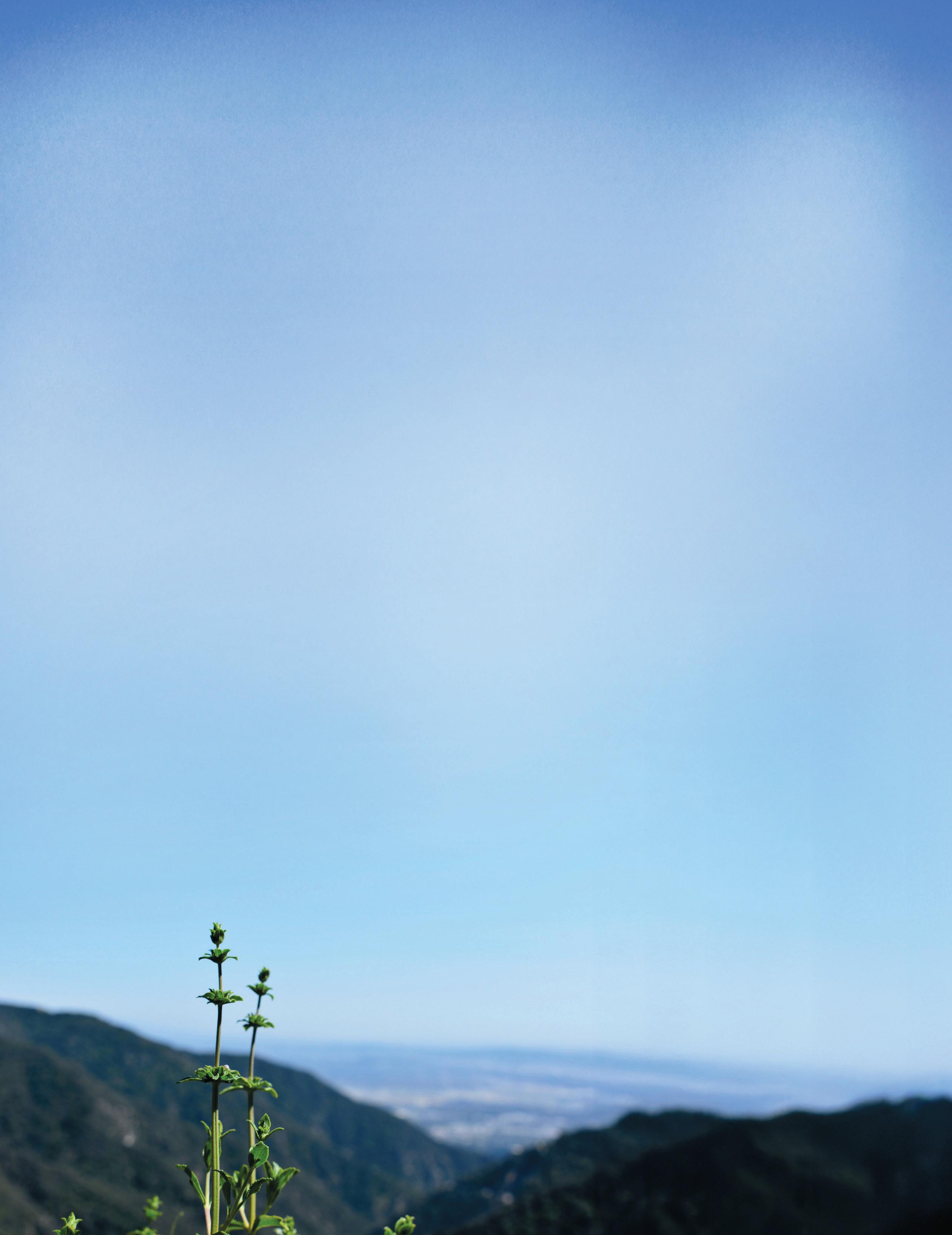
®
Sprouts showed up in my garden this spring like magic. I didn’t plant any seeds, so it was a curious sight. As they developed more leaves, their secret was out: They are tomatoes from seeds that stowed away in compost. What kind of tomatoes they are is still a secret.
It’s not lost on me that I’m lucky. I can nurture these plants without any post-fire mitigation efforts.
Like spring itself, my garden is a sign of hope, of new beginnings. It’s fitting that the theme for this issue is Rebirth: Up from the Ground.
The San Fernando Valley is full of gardeners—both literal and figurative—who are coming together to plant seeds for the future. They’re putting down roots and lifting up the community.
In “Seeds of Change” (on page 4), Cyndi Bemel shares how the Altadena Seed Library and Robin Jones, founder of Honey Girl Grows, are working toward native plant recovery by helping residents connect and restore fire-damaged ecosystems.
Common Space Brewery in Hawthorne created the fundraiser WeLoveLA from the ground up. It’s a fundraising network of 194(!) breweries using their beer to help with wildfire relief (page 24). This is just one of the Valley’s numerous creative fundraisers that have grown from the desire to help our community.
In this issue, we also profile the global nonprofit World Central Kitchen (WCK) and appreciate its work locally to facilitate rebirth. As I write this, WCK staff and volunteers are distributing produce at the Malibu, Altadena and Sierra Madre Library farmers’ markets, and a WCK Relief Team is in Southeast Asia after the 7.7 magnitude earthquake shattered areas of Myanmar and Thailand.
This spring, get your hands dirty by helping out the garden. Whether it’s yours or the community’s, it will reap many rewards.

Sarene Wallace, Managing Editor
San Fernando Valley publisher, editor in chief Tami Chu managing editor
Sarene Wallace
copy editor
Doug Adrianson design
Cheryl Angelina Koehler
contributors
Cyndi Bemel • Ramiah Chu
Tami Chu • Christine Denney
Robin Gemmill • Aja Goare
Naomi Henry • Julia San Bartolome
Tracey Smith Studio • Carole Topalian
Sarene Wallace sales ads@ediblesfvalley.com
subscriptions
EdibleSanFernandoValley.com info@ediblesfvalley.com
contact us
Edible San Fernando Valley 2470 Stearns St. #142 Simi Valley, CA 93063
805-622-9355 info@ediblesfvalley.com
Edible San Fernando Valley is published seasonally, four times a year. We are an advertising- and subscriber-supported publication, locally and independently owned and operated and a member of Edible Communities, Inc. Distribution is throughout the San Fernando Valley, Santa Clarita Valley and Pasadena and by subscription for $29 per year. Every effort is made to avoid errors, misspellings and omissions. If, however, an error comes to your attention, please accept our sincere apologies and let us know. No part of this publication may be used without written permission of the publisher. © 2024. All rights reserved.





OUR MISSION: Currently in its third year, Edible San Fernando Valley was founded to document and bring to life the interest in farm-to-table, organic and natural foods, and to acknowledge the people and communities who feed and sustain us. We want to inspire readers to support and celebrate the growers, producers, chefs, food and beverage artisans and other food professionals in our community.



WORDS BY CYNDI BEMEL | ILLUSTRATIONS BY RAMIAH CHU
Recovering from the Eaton Fire is a long road and one that will take years of dedication, collaboration and resilience. There’s no denying the disruption and loss, but the true strength of this journey lies in how we come together and rebuild. Two local organizations—the Altadena Seed Library and Honey Girl Grows—are playing a vital role in this recovery by helping neighbors connect and restore the ecosystems impacted by the fire.
The Altadena Seed Library, founded by Nina Raj, offers a unique way to help the community regrow its roots— through seed libraries. These mini libraries placed in front yards encourage neighbors to share seeds to plant in their gardens. It’s like a book library, but for plants.
“We hosted a seed donation drive directly after the Eaton Fire to gather seeds to regrow urban yards and developed green spaces across Altadena,” says Raj. “We received an overwhelming response.”
Though they’re not collecting seeds now, the libraries are still growing strong. What makes these seed libraries even more special is their connection to the Eaton Fire. Angel City Lumber in Los Angeles crafts the libraries using lumber from local trees that fell during the fire, bringing a piece of the community’s history full circle.
“I believe strongly in restoring native ecosystems,” says Raj. “Focusing on seeds native to Southern California is a way to give back to our environment.”
The seed libraries are installed in front yards, schools, community gardens, recovery houses and urban green spaces in Altadena, Glendale, Little Tokyo and South LA.
The best part? The libraries are self-sustaining and free to use, ensuring everyone can access this vital resource. “It’s amazing to see neighbors using them and sharing seeds,” Raj says. “It’s a wonderful way to connect with your community.”
Robin Jones, founder of Honey Girl Grows, is a multi-hyphenate who’s an organic culinary garden and pollinator projects designer, Master Gardener and beekeeper. She’s working on the first book about regenerative beekeeping practices. Jones started her business in 2016 and quickly became known for creating regenerative habitats and edible gardens for Michelin-star chefs and corporations like Red Bull and Snapchat. But when the Woolsey Fire hit in 2018 and the farm that hosted their commercial greenhouse burned to the ground, Jones felt compelled to get involved in fire recovery efforts.



Her mission is to help rebuild communities affected by fires. With the recent Palisades and Eaton fires, Jones has been collecting seeds and distrib uting them to local schools and community gardens. Donations are greatly appreciated, and seed companies have been extremely generous, she says.
Jones is also planning to host seed swaps to help rebuild the ecosystem with distribution starting spring 2026. Rebuilds take time, she says.
In addition to collecting seeds, Jones has teamed up with her archae ologist partner, Justin Walsh, and Daniel Richter, PhD, a fire soil expert from Duke University, to study the long-term effects of fire on soil. Together they’re testing soil samples to better understand the impact of fires on con taminants and metals in the ground, with results expected soon.

For people living adjacent to the burn area, rejuvenating the soil and bringing back the pollinators is extremely important to balance the ecosystem. But, she cautions, soil should not be remediated until it’s tested to ensure it’s safe.
Planting more flowers will help revive the ecosystem. “Right plant, right place, right climate,” Jones says. “Everything blooms in spring,” she adds. “Southern California pollinators are no longer getting a winter diapause (rest).” She recommends strategically planting drought-tolerant native and non-native flowers that bloom August through January to help pollinators survive year-round with climate warming.
Raj and Jones are stepping up, building our communities and growing our hope one seed at a time for a greener future. There is no better way to honor Mother Nature than to plant new life— a tree, flowers or a vegetable garden.
Altadena Seed Library
AltadenaSeedLibrary.com
Honey Girl Grows
HoneyGirlGrows.com
@HoneyGirlGrows
Consider adding these drought-tolerant plants to your garden so pollinators have critical blooms from August through January. Many natives that bloom in these months are too large with too few flowers for their space demands, says Robin Jones, founder of Honey Girl Grows. These are all smaller pollinator-friendly plants, so they’re easy to fit into apartment patios and urban yards:
Mexican mint marigold Lavender Rudbeckia Echinacea Verbena Yarrow
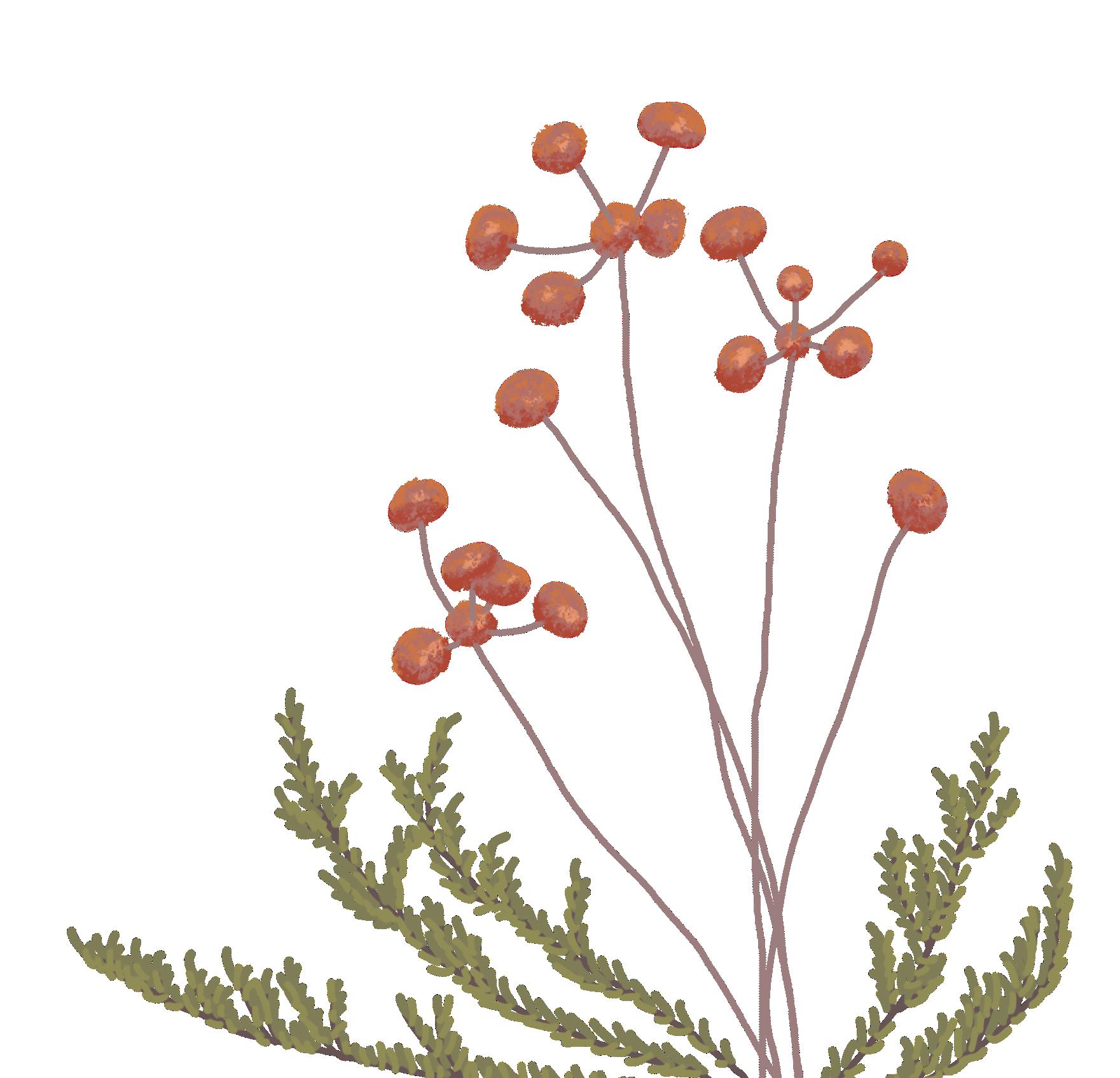
Native sunflowers Monkey flower Seaside daisy
Jones adds one more plant to consider: Madia elegans, which is pineapple scented and blooms mid-summer through fall. Its flowers are large enough to support large butterflies like monarchs and swallowtails.
For more gardening information, read “Spring To Life: Gardening Gurus Share Post-Wildfire Tips” in Edible San Fernando Valley’s winter issue.
Cyndi Bemel possesses a diverse repertoire of storytelling abilities that encompass various mediums, including photography, written and audio content. Her work has been published and exhibited on a national and international scale. As a Master Gardener and Master Food Preserver, Bemel exhibits a penchant for gastronomy, outdoor exploration and adventure-seeking.

WORDS BY SARENE WALLACE
Peel back Calabasas’s veneer as a paparazzi magnet, and you’ll find a town of 22,227 residents who know the real Calabasas—the one where you can spend the day dining and exploring its natural beauty. Start your day at La La Land Kind Café in The Commons at Calabasas. Order one of the creative espresso or matcha tea options with names like “World’s Best Vanilla Latte” and “Lavender Bloom Latte.” Enjoy your liquid treat amid the white-on-white décor. On a nice day, it’s worth grabbing a table on the large outdoor patio with its lush plants and outdoor-mall-sized lake.
Another side to La La Land is its nonprofit arm, the La La Land Foundation. Its La La Workforce Development Program is open to people ages 17–25, in foster care or transitioning out of the system, to train as a barista at selected cafés to build work experience and gain personal development.
Francois Reihani, founder, president and CEO of the foundation, started the café as a place to get a meal and as a platform for change, according to the website. You can order toast with toppings to complement your coffee.
For bagel buffs, Hank’s Bagels is a must-visit. It takes three days to transform sourdough starter into bagels with a chewy exterior, tender crumb and superior flavor. It’s on day three that the staff comes in early in the morning to boil, seed and bake the bagels. The seed step results in lavishly loaded bagels for a full-flavor experience.
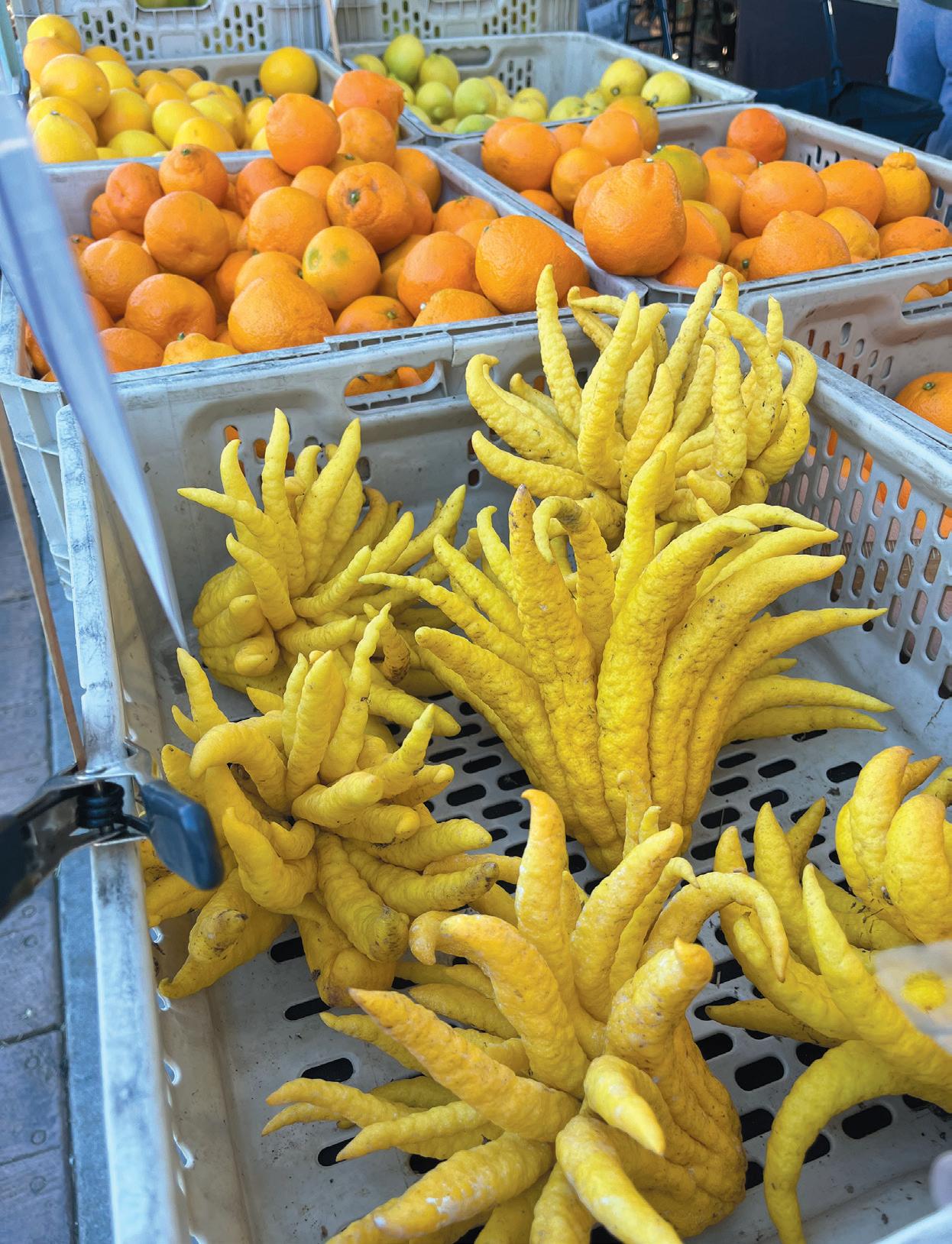

The bagels are made at the Sherman Oaks location and daily transported fresh from the oven to the Calabasas and Burbank shops.
Eat the bagel plain or gild it with a selection of sweet and savory cream cheeses. There’s also bagel sandwiches and breakfast items to choose from.
Trevor Faris, who co-owns the eatery with his wife, Kelley, started the business in 2019 with the Farises’ middle son, Hank, as its namesake. “Originally we also made focaccia for lunch sandwiches, but the bagel demand was too great, and we decided to shift all our focus to making the most bagels we could,” he says.
“I always thought I would open a pizza joint,” Faris adds. “Things didn’t work out that way.” We can all be glad it didn’t.
On Saturday mornings, you don’t want to miss the Calabasas Farmers Market. Held in Old Town Calabasas, the area is a hive of activity with the farmers’ market being the draw.
You’ll see people streaming into the farmers’ market or leaving with armfuls of farm-fresh produce, vibrant flowers and other sweet and savory goodies.
Choosing the seasonal fresh fruits and vegetables filling the vendors’ tables can be hard. But once you’ve picked your produce, shop for artisanal baked goods, from croissants to crusty loaves of sourdough bread. (You may want to purchase a handmade cutting board to slice that beautiful loaf.)
Pick up a jar of jam, almond butter or Hive honey to complement the loaves. Add eggs, and you have the makings for Sunday breakfast. For lunch and beyond, there are barrel-aged balsamic vinegars—like Strawberry White Balsamic—and infused oils, ingredient-spiked pickles and soups. There’s even fresh dog food and treats.
While you’re at it, grab some snacks for one of the area’s hiking trails. If you’re looking for short, head to the Calabasas Hidden Stairs. It begins at the Anza Loop Trail sign near the dead end at Calabasas Road. A soundtrack of freeway noise near the start gives way to bird songs (my bird app identified seven species) and views of scrubbrush hills and oak trees.
Opposite page: Any hike in Calabasas is especially beautiful in April and May while the hills are vibrant green. This page: Check the Calabasas Farmers’ Market for some unusual produce, but make time for a walk, since parking is limited. And for a hearty snack, try three-day sourdough bagels at Hank’s.

La La Land Kind Café
4799 Commons Way, Calabasas
The hike ends at 375 heart-pumping cement stairs to heaven that stop below a gated housing community. The stairs are about six inches tall, so they’re good for walking or running, and there are catch-your-breath landings. Do the stairs once and call it an accomplishment or multiple times for training. Either way, the top rewards you with far-reaching mountain and valley views. The out-and-back adventure is 1.3 miles.
For lunch, head back into Old Town Calabasas to Pedalers Fork. The airy, wood-paneled restaurant that opened in 2013 welcomes you with a full menu of gluten-free, vegan, vegetarian and omnivore selections. Healthy and decadent offerings let you be in charge. For something lighter, choose the Kale Caesar with toasted almonds, sourdough croutons and nutritional yeast; you can add a protein if you wish. Craving something more decadent? The Hot Chicken sandwich, with its crispy buttermilk fried chicken, chili rub, pickles and chili aioli might be the answer. There is also a selection of tacos, barbecue, pizza and bowls. If you need more coffee, 10 Speed Coffee Shop is on the premises. And there’s a full bar, if you’re so inclined.
Superba Food + Bread is brand new to the Calabasas dining scene. This location, also in The Commons at Calabasas, expands the reach of the four Superba locations in LA (Venice, Hollywood, Pasadena and North Hollywood). Stop in for breakfast, lunch or dinner and pick menu items built around “seasonally driven ingredients.” The eatery sources produce weekly from the Calabasas and Santa Monica farmers’ markets and uses organic ingredients wherever possible. Signature items include the Superba Grain Bowl, Lots of Grains Hotcake and Roasted Mary’s Half Chicken. Plus, there are Calabasas-exclusive dishes, including the Egg White Frittata, Superba Hash Browns and Osetra Caviar, Bluefin Tuna Carpaccio and a Market Vegetable Fritto Misto. “Our Calabasas guests are sophisticated, “ says Jeff Goodman, CEO of American Gonzo Food Corp., Superba’s parent company, when asked how these dishes embody Calabasas. The goal is to “deliver compelling and healthful dishes” and “pair them alongside luxury items,” he adds.
The restaurant also features freshly baked breads and pastries, and adaptogenic ingredients in drinks and food items, such as matcha tea, activated charcoal, turmeric, CBD and mushroom powders. Adding to the feel-good experience, Superba monthly donates to organizations that impact its communities. Now that they’re in Calabasas, they’ll be helping organizations in the larger Calabasas area. Diners can vote for their preferred organization, helping to determine the distribution of donations, says Goodman.
LaLaLandKindCafe.com/ pages/thecommons
Hank’s Bagels
23655 Calabasas Rd, Calabasas HanksBagels.com
Calabasas Farmers Market
23504 Calabasas Rd, Calabasas
RawInspiration.org/locations/ calabasas-farmers-market
Calabasas Hidden Stairs
25169 Calabasas Rd, Calabasas
Pedalers Fork
23504 Calabasas Rd, Calabasas
PedalersFork.com
Superba Food + Bread
4719 Commons Way, Calabasas
LifeSuperba.com


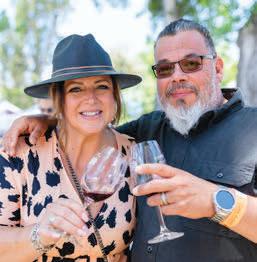





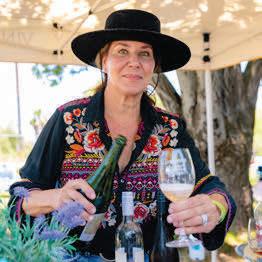


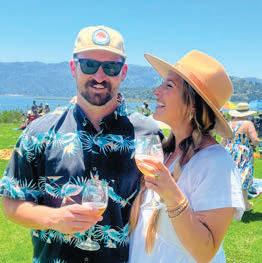














STORY AND RECIPES BY JULIA SAN BARTOLOME | PHOTOS BY NAOMI HENRY
When I was invited on a three-mile hike in Malibu with my girls’ Scout troop, I agreed to go without hesitation—not because I’m a hiker, but because it meant getting to spend quality time outside with my daughters, Sarah, 11, and Nina, 9.
As a food enthusiast, I obsessed over what we would pack for lunches more than I thought about actually training for the hike. As a mom and full-time pastry chef, I wanted to combine delicious with fresh and healthy options to make the hike memorable.
So I knew there was no way I could simply hit the trail without challenging myself to create some upgraded hiking food to enjoy along the way.
PB&J sandwiches, chips and juice box would not do.
I took great care in planning the meal. I prepared traditional mufaletta sandwiches—a New Orleans favorite with spicy Italian meats, peppers and an olive tapenade—and paired them with a marinated chickpea salad, chopped fruit and a clever twist on trail mix with farmers’ market raisins, pistachios, toasted pepitas and chocolate-covered sunflower seeds instead of the traditional plain M&M’s. I am not a fan of cheap chocolate but the toasty-ness of the seeds made it seem like a good balance.
The hike into the Malibu Hills was super challenging for my beginner status, but the views were beautiful, including the ocean on the horizon. Of course, the best part of the day was my daughters’ company. We laughed on the flat parts, cried on the inclines and persevered through the whole thing. I worked up a sweat and the payoff was knowing I had a superhero lunch for us stashed in my pack.
That first lunch was quite tasty after such a workout. But my chef tendencies kicked in and I couldn’t help thinking about how I could improve the meal. I learned a few lessons about appropriate ingredients and packing from this first hike.
One of the best aha moments was realizing that hiking food can be restaurant worthy. When packed properly and with a few modifications, even Scotch eggs can be hiking fare. (I used turkey sausage and heavy panko breading.) Cored apples filled with a date and ginger compote and crispy prosciutto is a divine dessert.
Store-bought granola bars tend to be more like cookies than healthful treats, so I created one that has less sugar and more protein. They’re moist and my daughters love them.
Even traditional frosted carrot cake became hiking food, as carrot cake squares with cream cheese baked in the middle.

On this hike with her children Sarah, 11, and Nina, 9, Julia San Bartolome brought a delicious supply of homemade snacks.

Developing hiking recipes has become as much fun as exploring our area’s miles and miles of hiking trails. I’m always on the lookout for standard lunch recipes, hand-held snacks and salads that can be turned into something that will travel well and be delicious. And, of course, create minimal trash. (We want to leave the area at least as clean as we found it, so carrying our trash back to the nearest can is a must.)
You can still find me hiking on any given day on trails around Ventura and LA counties. It is a continually challenging sport that has kept my interest in several ways, my favorite being the obsession with the clever food stashed away in my pack.
Julia San Bartolome is the three-time winner of the Food Network’s “Cupcake Wars.” She has a passion for all things food related. San Bartolome holds a degree in pastry arts from the California Culinary Academy in San Francisco.
This recipe was adapted from Martha Stewart’s Prosciutto Crisps. The chips are delicious on their own, so San Bartolome suggests doubling the batch so there are enough to eat solo.
3 ounces sliced prosciutto
1 ounce extra virgin olive oil
1 ounce fresh sage leaves, stems removed
Preheat oven to 375°F.
Gently toss prosciutto slices in olive oil. Place them individually on a silicone mat or a parchment-lined baking sheet so that they don’t overlap.
Finely chop sage into thin strips and sprinkle over prosciutto slices.
Bake until prosciutto is crisp and edges begin to curl up, about 15 minutes. Let cool.
Makes 4 servings
4 apples, preferably Fuji, Gala or Honeycrisp
Prosciutto chips (see recipe below)
8–10 large pitted dates
½ cup pistachio nuts, roasted and salted
1 teaspoon finely grated fresh ginger
1 tablespoon honey
To core apple: Use an apple core tool to cut the apple down the middle, from the stem end, being careful not to press through the whole apple.
Use a melon baller to remove the top ¾ of the core, leaving the bottom of the apple’s core intact. Be sure to remove the tough fibers and seeds.
To make the filling: Use a knife to mince the prosciutto chips, pistachio nuts and dates, and toss with the grated ginger and honey. This will form a sticky compote.
Fill the cored apples with the minced mixture using 2 spoons—1 to hold the filling and the other to scrape it into the apple.
San Bartolome likes to bring homemade protein-rich snack bars on hikes with her daughters. Any stone fruit preserve can be substituted for the peach, she notes.
Makes 16 servings
⅔ cup brown sugar
⅔ cup all-purpose flour
1 teaspoon ground cinnamon
⅔ cup almond butter, separated
¼ teaspoon salt
4 tablespoons unsalted butter, melted
⅓ cup old fashioned rolled oats
8–10 ounces peach preserves
½ cup sliced almonds
⅓ cup dried coconut chips
¼ cup finely chopped dark chocolate
Preheat oven to 350°F.
For the crust and crumble, put brown sugar, flour, cinnamon, ⅓ cup almond butter and salt in the bowl of a standing mixer fitted with a paddle attachment. Turn mixer to low.
With mixer running, and as ingredients are coming together (you will see the almond butter forming small pieces), slowly pour in the melted butter, forming a loose sand-like mixture.

Remove ½ cup mixture to a small bowl and set aside. Add rolled oats to the mixer and turn on low until mixture is just mixed. Press mixture into a 9- by 9-inch pan, or similar-size pan. Using the back of a large spoon, press mixture firmly to create a dense crust.
Bake in preheated oven for 10 to 12 minutes. Remove from oven and allow to sit for only a few minutes. Keep the oven on.
While crust is still warm, spoon remaining almond butter on top. Allow almond butter to warm so it’s easy to spread over the surface of the crust. Spread evenly. Spoon peach preserves over the sliced almonds.
Toss the remaining crumble with the sliced almonds and coconut chips, spreading the mixture evenly over the pan.
Return pan to oven for another 12 to 15 minutes, or until crumble topping is golden brown.
Remove from oven and sprinkle top with chopped dark chocolate. Once cooled, cut into approximately 2- by 2-inch squares and store in an airtight container at room temperature.
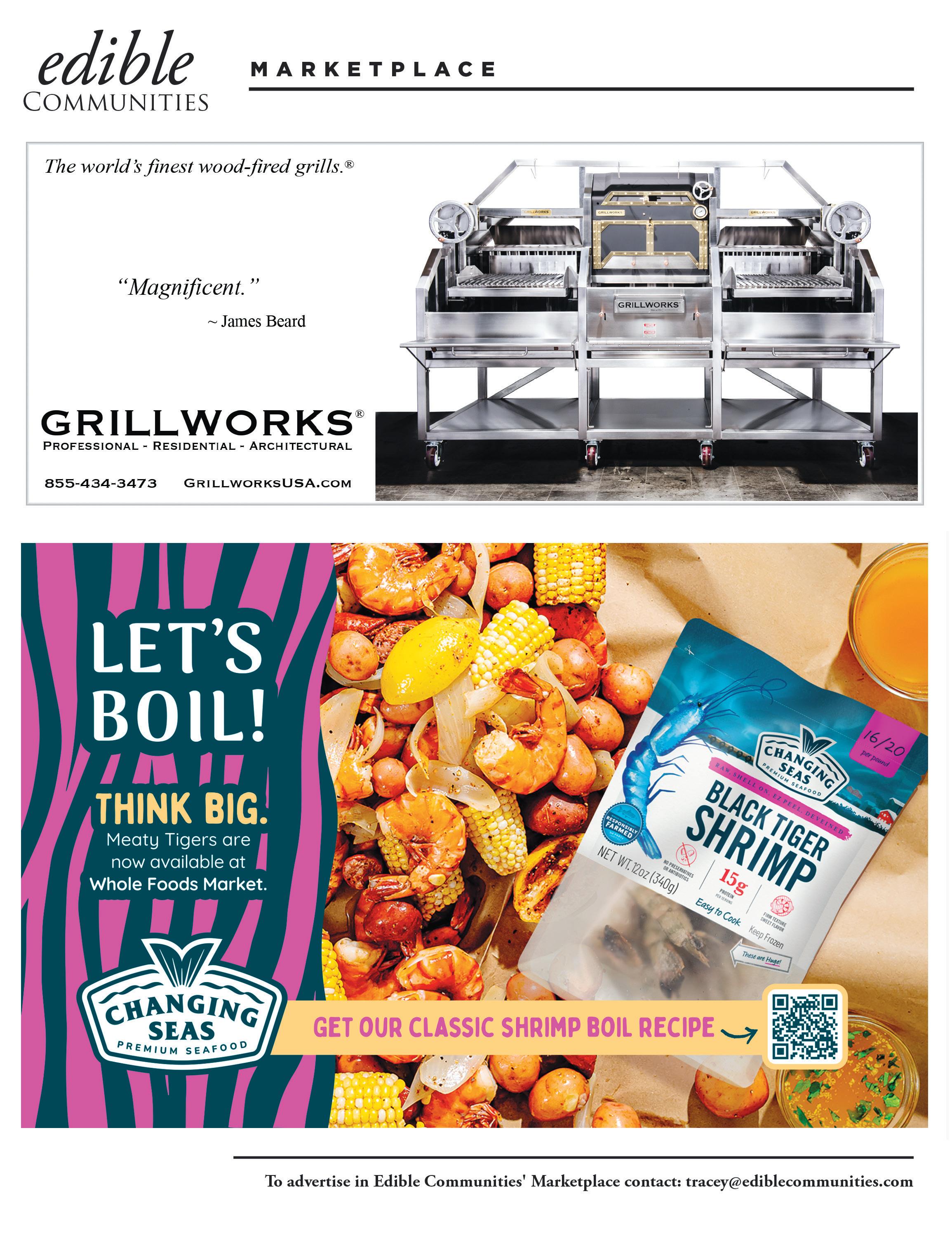

RECIPES BY CHRISTINE DENNEY | PHOTOS BY TRACY SMITH STUDIO
It is easy being green when spring is in the air, and it doesn’t hurt any to be living in one of the most beautiful places on earth. Young tender asparagus shoots take on their color from the sunshine with the promise of deliciousness recognized ever since the ancient Romans, who cultivated it in their gardens and credited it with having medicinal benefits.
This salad can be enjoyed all by itself, or perched atop whole or chopped greens—watercress is delicious—or used as a bruschetta topping when tomatoes are at their best. It’s also a great addition to an antipasto, accompanied by prosciutto and your favorite olives. I even enjoy it with a little anchovy mashed into the olive oil. I recall this salad from years ago, most likely from an issue of Food & Wine magazine. This is how I remember it.
1 pound asparagus, trimmed and cut into 3-inch pieces
2 tablespoons olive oil
3 tablespoons lemon juice
Salt and pepper to taste (coarse salt is good with this dish)
2 tablespoons each chervil*, chives, mint and parsley, coarsely chopped
⅓ cup shaved Manchego cheese (or Parmesan)
The asparagus can be boiled, steamed, grilled or roasted for this recipe. I recommend steaming it for 3 to 8 minutes, depending on stalk size. If boiling or steaming asparagus, immediately plunge pieces into a bowl of ice water to help retain their bright green color. Drain and dry well.

In a small bowl, whisk together olive oil, lemon juice, salt and pepper. Whisk in herbs.
Arrange asparagus on a platter and toss it gently with whisked dressing. Top with shavings of Manchego cheese (or Parmesan, if you prefer) when ready to serve.
Individual plates can be lined with lettuce leaves or framed by avocado slices.
Variation: To make bruschetta, brush top of bread with some dressing and add thinly sliced tomato, asparagus and Manchego salad.
* If chervil is not available, tarragon can be used. To substitute, use 1 tablespoon tarragon and increase the amount of parsley to taste.
This vegan recipe requires a little less attention when ingredients are roasted in an oven, but it’s also divine when done on the grill using a grill pan. It makes a great first course when you throw a few pistachios on top for some crunch and protein. It’s a happy thing that Ojai Pixie tangerines and asparagus find their way to us at the same time, in peak season. You can salt this dish to taste, if you like, but the addition of the mustard makes that seem unnecessary to me. Using oil and vinegar from Ojai Olive Oil or another local producer adds to the local flavor.
Serves 4–6 as a side dish
1 pound asparagus, trimmed
1 small bulb fennel, trimmed, quartered and very thinly sliced
2 Ojai Pixie tangerines, peeled and sectioned (or other small, seedless tangerines)
3 tablespoons mandarin-infused olive oil
2 tablespoons fresh lemon juice
¼ teaspoon black pepper
1 teaspoon whole-grain mustard
5 sprigs fresh mint
1 tablespoon tangerine-infused balsamic vinegar
½ cup shelled pistachios (optional)

Preheat oven to 400°F. Place asparagus, tangerine sections, fennel and mint in a 9- by 13-inch baking dish. In a small bowl, whisk together olive oil, lemon juice, pepper and mustard. Pour the olive oil mixture over asparagus, tangerines, fennel and mint and coat evenly.
Roast about 10–12 minutes, until crisp tender, stirring midway. Baking time will depend on thickness of asparagus. Remove mint sprigs after baking.
Transfer asparagus and other ingredients to a serving platter and drizzle with tangerine-infused balsamic vinegar. Garnish with fresh mint and pistachio pieces, if desired.
Variation: Extra virgin olive oil and balsamic vinegar can be substituted for the flavor-infused varieties.
This healthful, vegan soup gets its creaminess from cannellini beans instead of cream. It’s also higher in protein than one made with cream, and it is suitable for an entrée.
Serves 4–6
2 tablespoons extra virgin olive oil
½ cup onion, diced
1 pound asparagus, tough ends removed and used for stock or composting
1 quart homemade vegetable stock (or 2 teaspoons bouillon dissolved in 1 quart water)
2 cups cooked cannellini beans (or a 15-ounce can of beans; rinsed well)
Lemony Pesto, recipe at right
In a medium-size pan, sauté onion on low heat until it is just starting to brown. While onions cook, cut asparagus into 2-inch pieces, reserving tips.
Add asparagus stalks to pan with stock. Bring to a boil and simmer for approximately 10 minutes, until just tender. Time will vary depending on thickness of asparagus stalks.
Add cannellini beans and blend soup until creamy. A traditional or immersion blender will make it easy.

When ready to serve, heat soup to a simmer and cook asparagus tips in soup for about 2 minutes, just until barely tender.
Lemony Pesto mixture can be swirled into individual bowls or combined with soup right before serving.
Lemony Pesto
1 tablespoon finely minced garlic
1 tablespoon fresh lemon juice
2 teaspoons lemon zest
¼ teaspoon black pepper
½ cup finely minced flat-leaf parsley
Grind all ingredients with a mortar and pestle or process briefly in a food processor.

WORDS BY ROBIN GEMMILL | PHOTO BY CAROLE TOPALIAN
f you’re interested in growing asparagus in your garden, you’ll be rewarded with 15 years of annual harvests. You’ll need some patience because asparagus spears need to be eight inches high before they can be harvested—this takes about two to three years. Once the plants are ready, harvest them between early May and late June.
Here’s some helpful info to get you started.
Sunshine: Choose a very sunny spot in your garden or a raised bed with well-drained organic soil with a pH of 6.5–7.0. Fortify your soil with phosphorus and potassium to ensure you have successful growth.
Asparagus can be grown from seed or crowns.
Seeds: If you are using seed, plant in the spring. Plant them 1 inch deep, two to three inches apart; they’ll germinate in about 3 weeks. Once the seeds sprout, allow them to continue growing through the summer. Keep the soil moist; weed and compost regularly. In late October, mulch around the seedlings with four to six inches of straw. (This protects the new growth through winter.) In early April, carefully dig up the root/crowns and move them to a more permanent spot in your garden.
Crowns: If you purchased asparagus crowns or have been given a few crowns, plant them in a trench about eight inches deep. Space crowns about 12 to 18 inches apart. Cover them with about two inches of rich organic soil and a small amount of the phosphorus/potassium mixture. Keep the area moist, especially as the plants become established. As the crown grows, add back soil in two-inch increments from outside the trench until the bed is level. After the harvest, let the asparagus plant continue to develop and grow the large, feathery, fern-like leaves. The fern creates energy that will be stored in the root to produce next year’s growth.
Pests: Watch out for cutworms and aphids as the seedlings grow. For cutworms, keep your garden area weed-free, use a collar around seedlings to protect them or hand-pick the cutworms off the seedlings. Plant marigolds or nasturtiums in another part of the garden to attract the aphids away from the asparagus seedlings.


If you’ve never seen a mature asparagus plant, you’re in for a treat. They grow large, feathery, fern-like leaves.
WORDS BY SARENE WALLACE
As the fires ravaged our community on January 7, World Central Kitchen (WCK) appeared, serving hope and hot meals to a shell-shocked community.
This is what restaurateur and chef José Andrés envisioned when he launched WCK in 2010 following an earthquake in Haiti: working with a sense of urgency and humanity to provide disaster relief and help devastated communities recover.
WCK was “literally the cavalry when no one else was there,” says Gabby Galvan, owner of the LADonut food truck, one of 105 restaurant partners in Los Angeles County that partnered with WCK to feed first responders, evacuees and anyone else affected by the fires. “They continue to amaze me with all that they’ve provided,” she says.
On day one of the fire, the WCK team went into emergency response mode to provide nutritious hot meals that tasted good. “Dignified hot meals,” in the words of Trish Engel, WCK community outreach manager and response lead for the LA Wildfire.
“Whatever the need is, we’ll fill it,” Engel says “We don’t take no for an answer. We make it happen.”

José Andrés and WCK volunteers were on location distributing good food near both the Eaton and Palisades fires within hours of the first sparks.
Photo by Ryan Salm

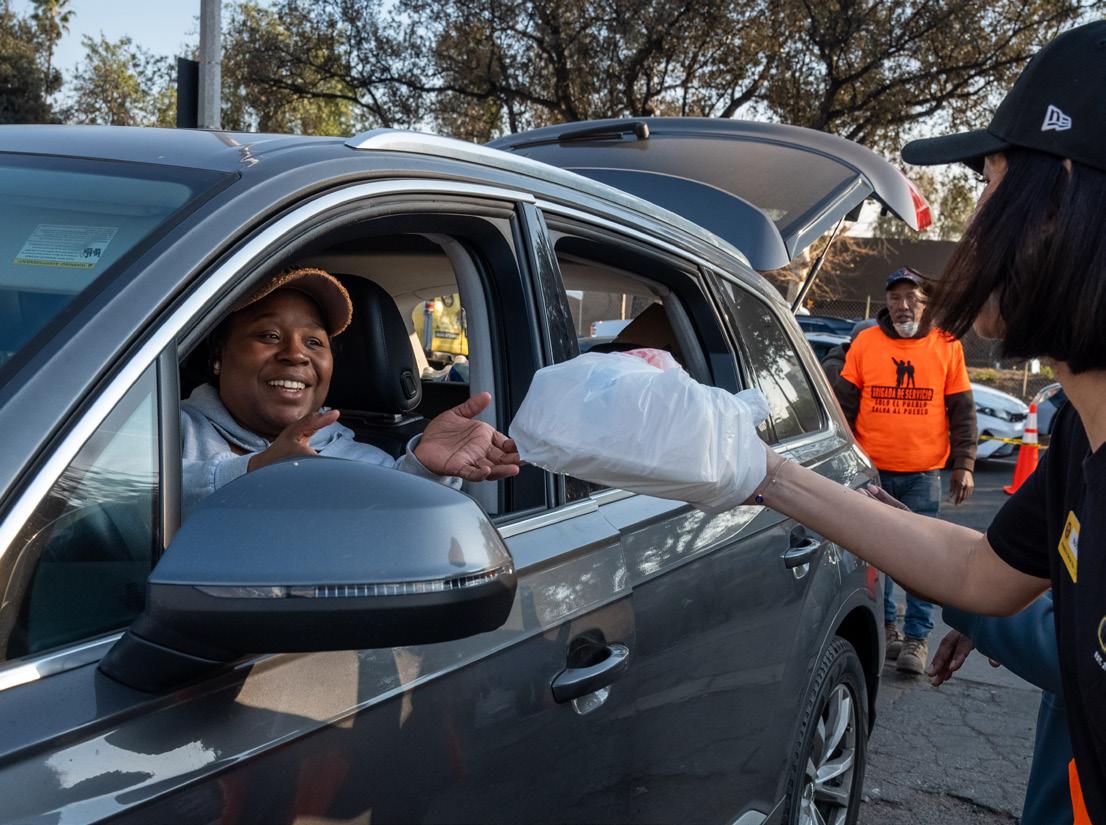
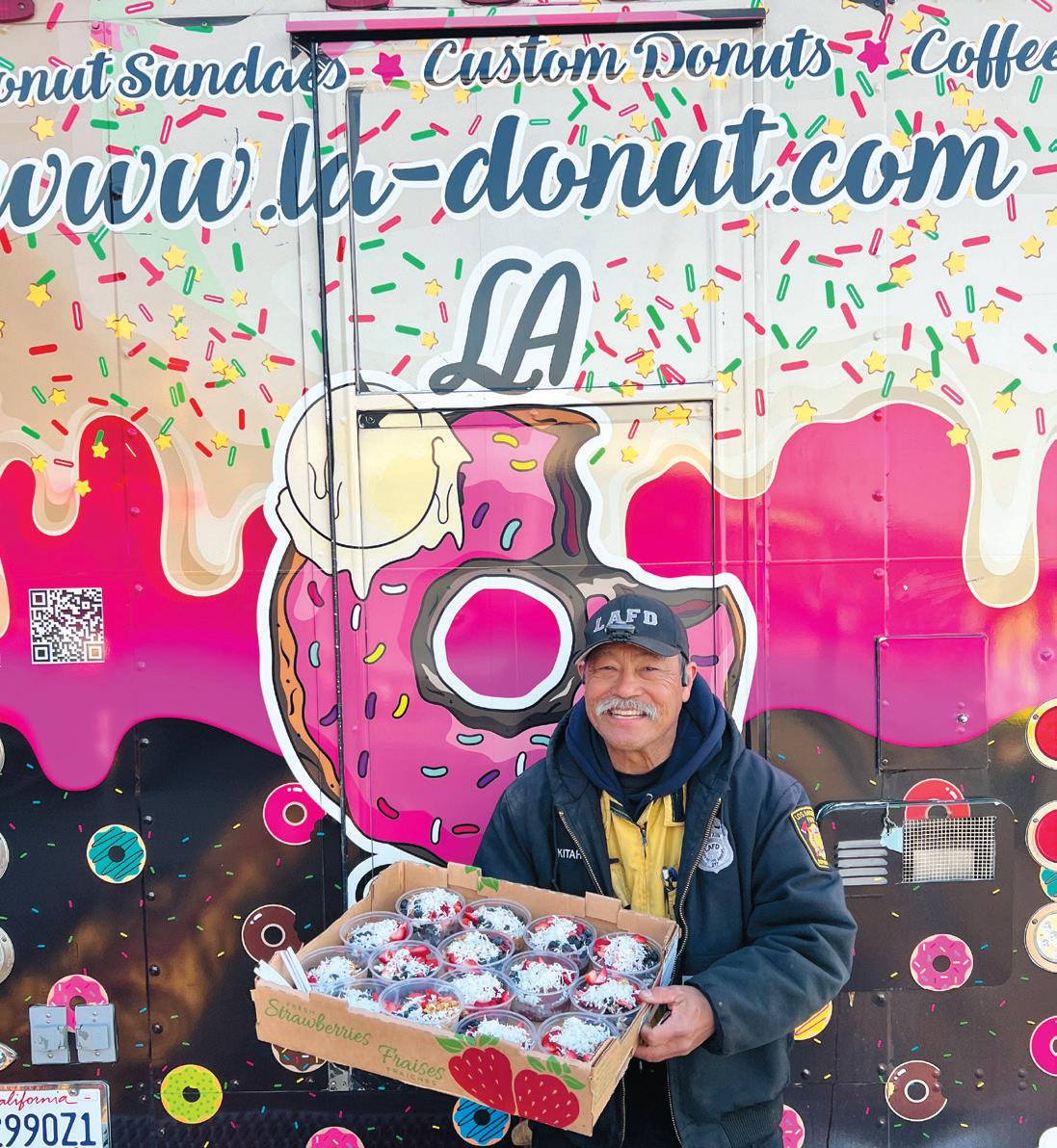
The organization mobilized quickly by contracting with its network of restaurants and food trucks throughout the Los Angeles area. Together, they built a culinary community of support through expanded distribution points and WCK Cafés.
These partnerships happened organically and with purpose.
“I reached out to potentially see if I could somehow help since I knew they had access to the affected areas,” says Galvan, whose friend and fellow food truck owner sent her contact info for WCK. “I was receiving DMs from friends who knew of firemen and hotshots that had no food. I put WCK in contact with them, and from that moment my relationship with WCK began.”
By January 11, she was in her food truck serving lattes, coffee, acai bowls and donuts from 4 to 9am.
Sam Nimri, co-owner of Flaming Grain, felt compelled to help people who lost everything in the fire. “We figured that the least we can do is offer a meal to them and their family,” he says. Flaming Grain served grilled steak or chicken bowls and veggie burrito bowls.
When WCK discovered food trucks that had taken the initiative to feed first responders out of their own pockets, they were brought into the fold.
“We said, ‘Come on board with us. Let’s get you paid because you’re already doing such great work for the community,’” says Engel. WCK pays participating food trucks and restaurants per meal distributed. The amount covers the ingredients and labor costs so businesses don’t take a financial hit for their generosity.
“I was surprised at how willing and flexible our restaurant partners have been,” says Andrew Lo, WCK culinary lead for the LA Wildfire activation. “We’d reach out to food trucks, and they’d have to mobilize within 12 hours and they did it. There is no heartier stock than people who run restaurants or are in hospitality,” says Lo, who grew up in a restaurant family.
Baja Cali Fish & Tacos on Lake Avenue in Pasadena transformed into a WCK Café, where they served fish tacos, chicken tacos, chicken al pastor tacos and chicken bowls outside the restaurant.
“We also personally delivered meals to people waiting in the car line across the street where the Pasadena Community Job Center organized donations for the community,” says Jaime Alvarez, who owns the restaurant with Lorena Varela.
Their efforts have made a great impact, with Baja Cali Fish & Taco, LA-Donut and Flaming Grain serving a combined 100,990* meals.
Feeding people hot meals is only part of the WCK model. Now that businesses are opening back up, the team has transitioned to bringing money back into the local economy and supporting the populations still hurting, including those still displaced and the elderly.
“It’s really important to us to support local,” says Engel. “We employ local; we buy local. Those are the businesses that are really struggling right now.”

People receive “dignified hot meals,” says Trish Engel, WCK community outreach manager and response lead for the LA Wildfire.
WCK gave $1,000 gift cards for groceries to employees of devastated restaurants. The nonprofit also buys gift cards from local businesses and restaurants that were closed due to the fires. The gift cards are distributed at farmers’ markets or produce distribution sites.
Farmers have also been caught in the ripple effect. Their clientele was displaced by the fires, and they can’t sell their produce at farmers’ markets on hiatus. To help, WCK buys produce from small, organic farms in Los Angeles and the Santa Barbara area. They purchase enough for 200 produce boxes handed out free at the Topanga Farmers’ Market and distribute boxes to the elderly in Topanga who were directly impacted.
It’s a win-win. People enjoy fresh-picked, nutritious produce, and farmers are paid for their crops.
In Altadena, we’re still seeing a large need for produce,” says Engel. Based on feedback that some recipients are unfamiliar with some of the items, an education piece was added to help people learn how to use the ingredients.
At a yet-to-be-determined date, WCK will phase out its operations and transition the programs to local partner organizations that will continue supporting the community. (See sidebar on page 23.)
The word community fills every conversation with WCK team members and partner businesses. Each mention carried the weight of caring, hope and unity—three qualities always abundant in the Valley.
“Partnering with WCK was an opportunity to give back to a community that has embraced Baja Cali Fish & Tacos since 2017,” says Alvarez. “We’ll always remember WCK’s generosity and seeing a community come together in a time of great need.”
It takes a village. And it also takes a world and the local community.
*As reported on April 2, 2025.
To donate to World Central Kitchen visit wck.org/donate.
WCK support by the numbers for LA County
155,000 pounds
Total amount of produce distributed
$348,993
Total support that went directly to local organic farms
$375,000
Grocery gift cards for 375 employees of 29 completely devastated restaurants
$500,000
Gift cards from 100 impacted restaurants to be distributed to impacted community members
$16,772,299
Total financial support for restaurant partners
As reported on March 27, 2025
by Ryan Salm


Tricia Engel, WCK community outreach manager and response lead for the LA Wildfire, shared information about the local partner organizations WCK will be transitioning to for long-term community support:
Altadena Neighborhood Farmers’ Market: WCK will continue supporting the farmers’ market by covering the cost of produce so impacted families can continue receiving it. They’re a very small market and were giving away organic produce during the fires so WCK increased their capacity to ensure they could continue, and will maintain their support of the market’s “good work.”
“I also brought Rafa [Gass] who runs the Altadena Neighborhood Farmers’ Market on board with us to connect us to organic and indigenous farmers so they are paid directly,” says Engel.
As an aside, Gass lost her home in the Eaton Fire, and there is a GoFundMe page.
Hollywood Food Coalition: WCK hasn’t yet locked down how the two organizations will work together. The coalition is “eager and is also working on long-term feeding plans for fire relief,” says Engel.
Support + Feed: WCK is working very closely with the organization to transition targeted meal drops to hotels where fire-displaced people are living. They are planning longer-term support in the LA area and are applying for a grant to determine the capacity for additional WCK transition.
WORDS BY AJA GOARE




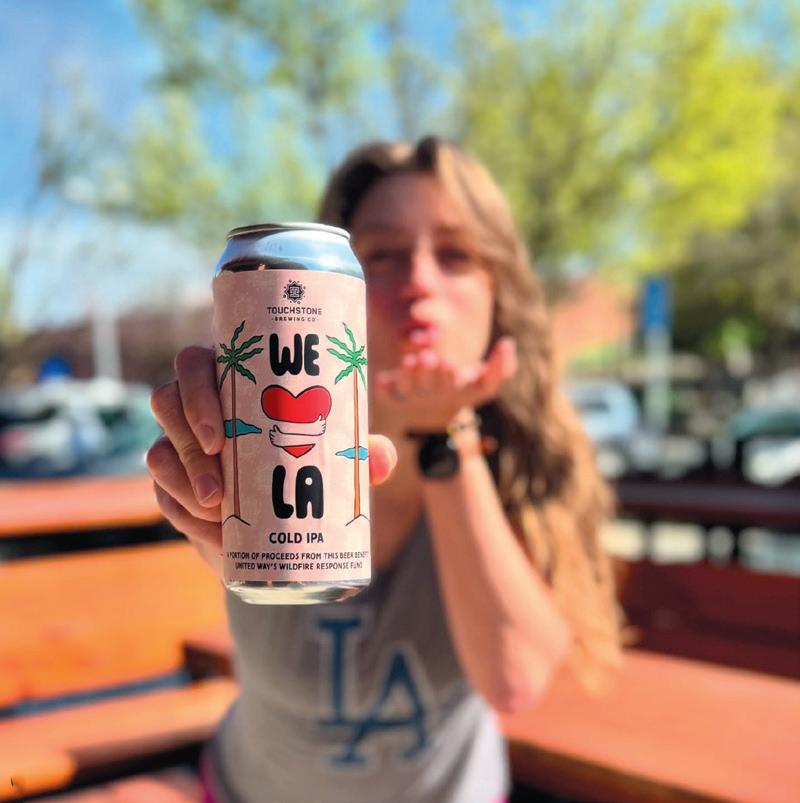






Breweries local and beyond stepped up to create special brews to raise funds for wildfire relief.
Artwork for the WeLoveLA cans was donated by California muralist Priscilla Witte.
When he first heard the phrase “Beer will change the world,” Canoga Park brewer Bryan Olson laughed. But as he and countless other brewers—domestic and international— unite to support Los Angeles wildfire relief efforts through WeLoveLA, he fully believes in the power of this hoppy beverage.
On January 10, Common Space Brewery in Hawthorne launched WeLoveLA, a fundraising network of breweries using their beer to help with wildfire relief.
So far, there are 194 participants; 141 are California breweries, 48 are from out of state and five are international (Japan, the Philippines, Australia), according to Kushal Hall, director of operations and founding team member of Common Space Brewery. There’s even a California winery and a homebrew club.
Each one offers its own WeLoveLA beer or wine. Designated proceeds are primarily earmarked for the United Way of Greater LA’s Wildfire Response Fund, says Hall. The fund supports “low-income individuals whose livelihood has been disrupted, people experiencing homelessness and those who provide services to support them, and disruptions to community organizations and small businesses.”
Participants have committed $346,579.16 to the campaign, says Hall.
“The support of all breweries—in the state, across state lines and internationally—makes it feel like everyone is rallying around LA,” says Olson, who co-owns 8one8 Brewing with his cousin, Derrick Olson. “This is a tragedy that brings people together. Seeing the response, it shows we all share common ground.”
In the Greater Los Angeles area, the wildfires burned more than 40,000 acres, destroying over 12,300 structures and triggering evacuation orders or warnings for as many as 200,000 residents, according to the U.S. Geological Survey.
“Our entire community has been impacted,” says Jackie McCombs, operations manager of Lawless Brewing Company. “Everyone knows someone [affected].”
Lawless in North Hollywood is contributing its West Coast IPA to the WeLoveLA campaign.
“We wanted to honor our LA roots, so we chose the traditional beer of California,” McCombs says. They produced about 400 gallons of the “dank, modern West Coast–style IPA with strong notes of peach, papaya and some citrus and berry flavors. The malt profile is clean and bone dry.”
8one8 is pouring its Hoppy Lager, a light, crisp beer with a hoppy finish. “We decided to experiment with something new. We expanded on our knowledge of making great lagers and great IPAs and merged them with this beer. So this is a blend of those two styles—it’s a very drinkable beer,” says Olson, adding that they produced 217 gallons.
Many breweries paired their special beer with an event; 8one8 partnered with a nearby pizza shop, and Lawless organized a pub crawl to gin up support.
It might seem counterintuitive that would-be competitors are coming together for a shared cause, but to Olson and McCombs it’s just the nature of the industry.
“We support each other and do what we can to help each other be successful because we know it’s better to have more smaller craft breweries than one big one, so we even share info and recipes; it improves the quality overall,” says Olson. “Every brewery has unique factors to their process that make it tough to duplicate beers.”
“Beer brings people together,” says McCombs. “ We’re stronger as a collective unit. When a need arises, breweries are up to the challenge.”
WeLoveLA beers are sold on tap, in bottles or cans at each participating location. Along with the contributions of participating breweries, 24 suppliers are donating or discounting materials for the cause.
California muralist Priscilla Witte is donating her time and designs to produce merch for WeLoveLA.
Not a beer drinker?
Many of the participating breweries offer alternatives, such as wine, alcoholic slushies and nonalcoholic beverages. Donations can also be made directly on the United Way of Greater Los Angeles website. Donors are encouraged to type “WE LOVE LA” in the dedication notes.
While there is no sunset date for the project, the plan is for all the beers to be released by early May. “We are exploring the idea of a fundraising beer festival in the fall to continue raising funds for those affected by the wildfires,” says Hall.
We’ll raise a glass to that.
Learn more at WeLoveLABeer.com.
Donations can be made at UnitedWayLA.org/ways-to-help/give/we-love-la
Stats are as reported on April 2, 2025.
Aja Goare is a local food writer and editor who works with multiple Edible magazines. She and her husband, Dustin, love to travel across the Valley looking for great eats. She’s also a child advocate, outdoor explorer and artist.

The relief effort reached as far as Japan (pictured here)! Cheers to the brewers that created WeLoveLA brews.
“We support each other and do what we can to help each other be successful because we know it’s better to have more smaller craft breweries than one big one, so we even share info and recipes; it improves the quality overall.”
—Bryan Olson






BY TAMI CHU
Smoke follows fires. The first thing I ask folks who live in and south of LA County is how much smoke they got from the fires. Many aren’t thinking about their exposure to airborne toxins when they respond.

caution in ash exposure—and in the lungs of people who were exposed to the smoke and air during and several days after the fires.
The long-term effects of urban fires are different from those of wilderness fires. The main culprits? The houses and buildings, especially those built before we knew the damage that lead can cause. Here are the stats: The Eaton fire burned 10,491 structures and untold number of vehicles in and around Altadena. Those buildings and vehicles contained pollutants including asbestos, lead, PCBs (polychlorinated biphenyls)—which cause cancer and respiratory toxicity, VOCs (volatile organic compounds)—like formaldehyde, benzene, etc.—which also cause the smoky smell and more.
While consistent air-quality testing has shown that the levels of these toxins are back down to indiscernible or barely discernible levels in the area, many particles are still present in the ash that fell—which explains the need for professional cleanup and
According to the American Lung Association, there is no safe level of exposure to these chemicals, which increase risk of mortality from cardiovascular disease, respiratory illness and lung cancer.
And now, the winds that fueled the fires are fueling redistribution of these ash-trapped toxins on a regular basis.
So what can we do, besides masking up each time the wind blows? Well, we can eat.
With the uptick in wildfires around the world, there has also been an uptick of studies looking for diets that can support respiratory health. Not entirely surprisingly, both a Mediterranean diet and specifically foods high in fiber have been found to be both supportive and protective of lung function. High-fiber foods also directly feed the microbes in the gut, lending more credence to the idea that the gut really is the heart of functional health. Additionally, research has shown that foods high in antioxidants and polyphenols benefit blood flow to the lungs.
Beetroots and greens: Beets are rich in fiber and a powerhouse of nutrients including folate, potassium, magnesium and vitamin C, carotenoid antioxidants and natural nitrates (that have been shown to improve respiratory health).
Asparagus: A prebiotic fibrous food, asparagus is an excellent source of multiple vitamins and minerals, as well as phytosterols and carotenoids.
Apples with peels: The peels in apples add more fiber, especially if eaten fresh. In addition to vitamin C, apples are a great source of antioxidants.
Red cabbage: You’ll notice the theme of red and yellow coloring in vegetables high in carotenoid antioxidants. Cabbage is also high in fiber, vitamin C and omega-3 fatty acids.
Dark leafies: Spinach, kale, Swiss chard, collards and the like are all high in fiber, folate, magnesium and antioxidants.
Berries: The more colorful, the higher the antioxidant content. Pick berries that are in season at peak ripeness for most access to the nutrients.
Broccoli: Best eaten raw or just barely cooked until bright green, broccoli has high levels of vitamins C, A, minerals and fiber.
Tomatoes: In season, ripe and juicy, tomatoes are anti-inflammatory and prohealth. Tomatoes are also a key ingredient in many Mediterranean recipes.


Marshmallow leaf and roots: Marshmallow is easy to grow and all parts of the plant can be eaten. Known for benefits to respiration, roots can be used for tea and broth, leaves and flowers for salads and stews.
Mullein leaf: Also easy to grow, mullein is antimicrobial and antibacterial and used often for respiratory benefits. Best in teas or tinctures, it can also be digestively soothing.
Other herbs that can be helpful for respiratory health include: anise, bee balm, black elderberry and flower, nettle leaves, oregano, peppermint, reishi mushrooms, rosemary, sage, thyme and white pine needles.
For a chart on best sources of dietary fiber check out TamiChu.com.

Before Tami Chu, MA, MSHN was a publisher of Edible, she was a nutritionist who studied food as medicine.


TUESDAY
1 Glendale Gateway Certified Farmers’ Market
Tuesday 10am–2pm 801 N. Brand Blvd., Glendale SupportingArms.org/events.html
2 Hidden Hills Farmers’ Market (Exclusive Community Market) Tuesday 3–7pm @ccfminc
3 Sherman Oaks Farmers’ Market Tuesday 2–6pm 14006 Riverside Dr., Sherman Oaks RawInspiration.org
4 CSUN Farmers’ Market Tuesday 10am–2pm 18111 Nordhoff, Northridge RawInspiration.org
5 Pasadena Certified Farmers’ Market Tuesday 8:30am–12:30pm Villa Parke Center, 363 E. Villa St., Pasadena PasadenaFarmersMarket.org
WEDNESDAY
6 Canyon Country Farmers’ Market Wednesday 4–8pm 18410 Sierra Hwy., Santa Clarita CanyonCountryFarmersMarket.com
7 Northridge Farmers’ Market & Family Festival Wednesday 5–9pm Northridge Fashion Center Mall 9301 Tampa Ave., Northridge CoastalPacificMarkets.com
8 Panorama City Kaiser Farmers’ Market Wednesday 9am–1:30pm Kaiser Medical Center, 13652 Cantara St., Panorama City 310-383-3708
9 Warner Center Farmers’ Market
Wednesday 10am–2pm 5820 Canoga Ave., Woodland Hills @ccfminc
THURSDAY
10 South Pasadena Farmers’ Market Thursday 4–8pm 920 Meridian Ave., South Pasadena SouthPasadenaFarmersMarket.org
11 Woodland Hills Kaiser Farmers’ Market Thursday 9am–2pm
In Kaiser Medical Center 5601 De Soto Ave., Woodland Hills 310-383-3708
FRIDAY
12 Altadena Neighborhood Farmers Market Friday 3–8pm (Temporarily closed) 578 W. Palm St., Altadena @ccfminc
13 Granada Hills Farmers’ Market Friday 6–9pm Chatsworth St. at Yarmouth Ave., Granada Hills Email@granadachamber.com
14 Monrovia Street Fair & Farmers’ Market Friday 5–9pm
700 S. Myrtle Ave., Monrovia MonroviaStreetFairMarket.com
15 Olive View Medical Center Certified Farmers’ Market Friday 9am–2pm 14445 Olive View Dr., Sylmar SupportingArms.org/events.html
16 Topanga Farmers’ Market Friday 9am–1pm 1440 N. Topanga Canyon Blvd., Topanga TopangaFarmersMarket.com


This list was updated April 2025 but details do change and some markets may be affected by recent fires. Please contact the markets for the latest information.
If you know of another farmers’ market that is not listed, please let us know at info@ediblesfvalley.com.
























Farmers’ markets are an excellent way to support small local vendors. Some vendors at these markets have been affected by the fires. Our power to help is in where we spend our hard-earned dollars.
SATURDAY
17 Agoura Hills Farmers’ Market at Whizin Market Square
Saturday 10am–3pm 28914 Roadside Dr., Agoura Hills RawInspiration.org
18 Burbank Farmers’ Market
Saturday 8am–noon 101 N. Glenoaks Blvd., Burbank BurbankFarmersMarket.org
19 Canoga Park Farmers’ Market
Saturday 9am–1:30pm 7248 Owensmouth Ave., Canoga Park CoastalPacificMarkets.com
20 El Nido Farmers Market
Saturday 9am–2pm Pacoima Family Source Center 11243 Glenoaks Blvd., Pacoima mkaplan@elnidofamilycenters.org
21 La Cañada Flintridge Farmers’ Market
Saturday 9am–1pm 1346 Foothill Blvd., La Cañada Flintridge RawInspiration.org
22 NoHo Farmers’ Market
Saturday 8:30am–1:30pm 5000 Colfax, North Hollywood FarmersMarketNorthHollywood.com
23 Calabasas Farmers’ Market
Saturday 8am–1pm 23504 Calabasas Rd., Calabasas CCFM.com
24 Old Town Newhall Farmers’ Market
Saturday 8:30am–1pm 24500 Main St., Santa Clarita NewhallFarmersMarket.com
25 Pasadena Victory Park Farmers’ Market
Saturday 8am–12:30pm 2925 E. Sierra Madre Blvd., Pasadena PasadenaFarmersMarket.org
26 Woodland Hills Farmers’ Market
Saturday 9am–1:30pm 5650 Shoup Ave., Woodland Hills 818-300-3023
SUNDAY
27 Atwater Village Farmers’ Market
Saturday 9am–2pm 3528 Larga Ave., Atwater Village SeeLA.org/markets-atwater-village
28 Encino Farmers’ Market Sunday 8am–1pm
17400 Victory Blvd., Van Nuys Sepulveda Basin OneGeneration.org/farmers-market
29 LA Valley College, Good Times Farmers’ Market Sunday 9am–1pm 5800 Fulton Ave. Parking Lot A, Valley Glen @goodtimes_farmersmarket
30 Montrose Farmers’ Market Sunday 8am–1pm 2300-2314 Honolulu Ave., Glendale ShopMontrose.com/harvest-market-andmarketplace
31 Porter Ranch Farmers’ Market Sunday 9am–2pm In the Kaiser Permanente Lot 20000 Rinaldi St., Porter Ranch @ccfminc
32 Santa Clarita Certified Farmers’ Market
Sunday 8am–noon
College of the Canyons Parking Lot 5 Valencia Blvd. & Rockwell Canyon Rd. Santa Clarita Vccfm.org
33 Studio City Farmers’ Market Sunday 8am–1pm Ventura Pl., Studio City StudioCityFarmersMarket.com
34 Toluca Lake Farmers’ Market
Sunday 9am–2pm (reopening this spring) Wells Fargo Lot 10225 Riverside Dr., North Hollywood TolucaLakeFarmersMarket.org
35 Westlake Village Farmers’ Market
Sunday 10am–2pm 2797 Agoura Rd., Westlake Village Rawinspiration.org 20










36 Forneris Farms 15200 Rinaldi St., Mission Hills FornerisFarms.com
37 Sanchez Produce 16230 Sierra Hwy., Santa Clarita @Sanchezproduce Cash only
38 Tapia Bros. Farm Stand 5251 Havenhurst Ave., Encino @tapiabrosfarm
South Central Farmers CSA Various pickup and delivery options SCFCoop.SouthCentralFarmers.com
Good Box Organics

Various pickup and delivery options GoodBoxOrganics.com
EAT from Food Access LA CSA.Farmigo.com/join/foodaccesslosangeles








We get it
As a local small business, we understand the struggles that come with owning a business with a mission to serve our community. We are “all in” to support our partners.

We live it
We also represent our readers. We live here; we shop here; we drive, hike and garden here. We want our community to thrive! And we want to support businesses that want the same things.
We care


Because we care about our community, we also care about the planet and protecting it for our future. Our business practices embody this care, including the paper and ink we use in the magazine and how we recycle and reuse our supplies.


We are an advertiser supported publication. In order to tell the amazing stories we tell, we need quality partnerships with local businesses like you.

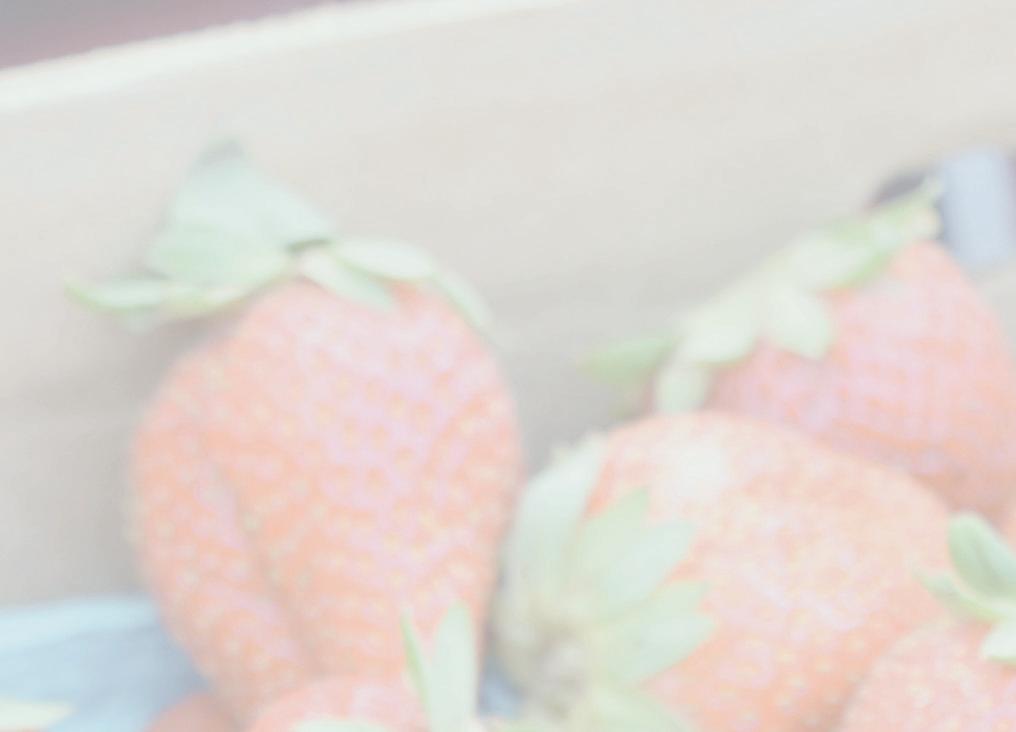

August














